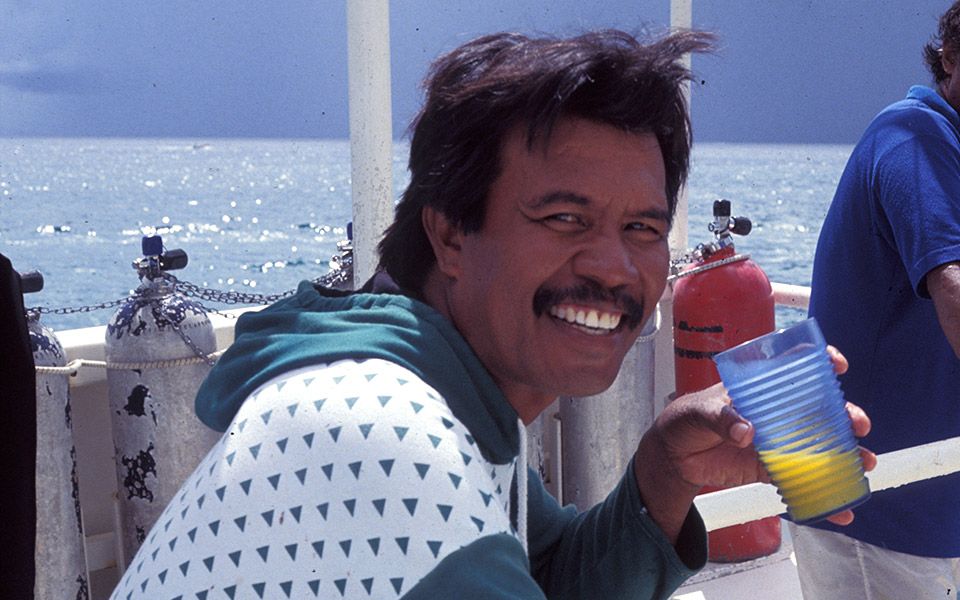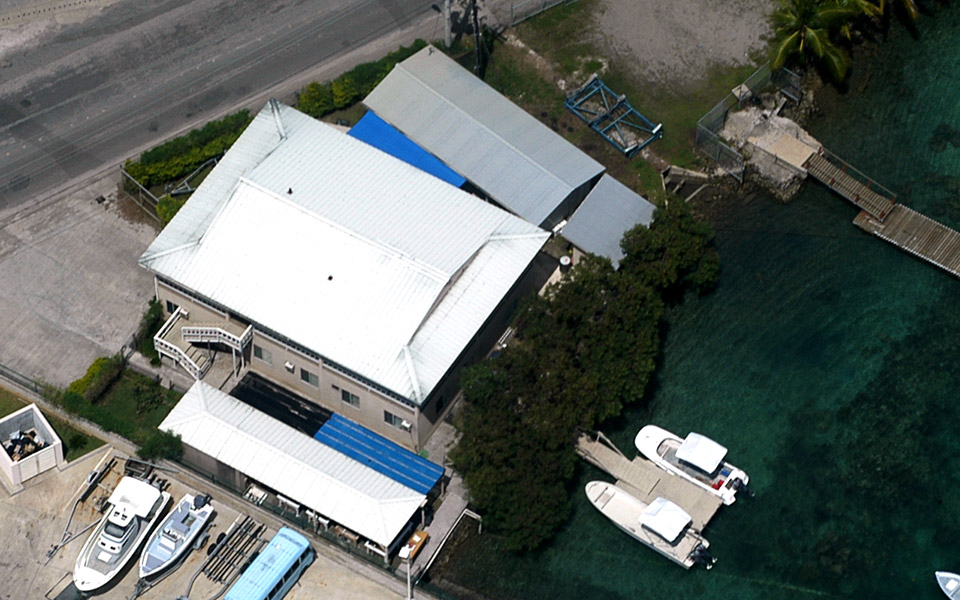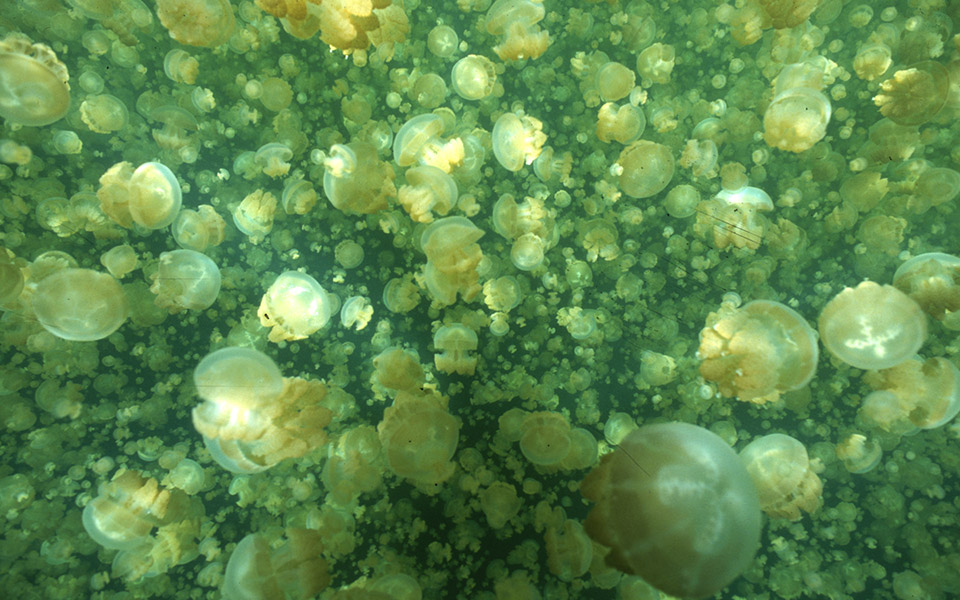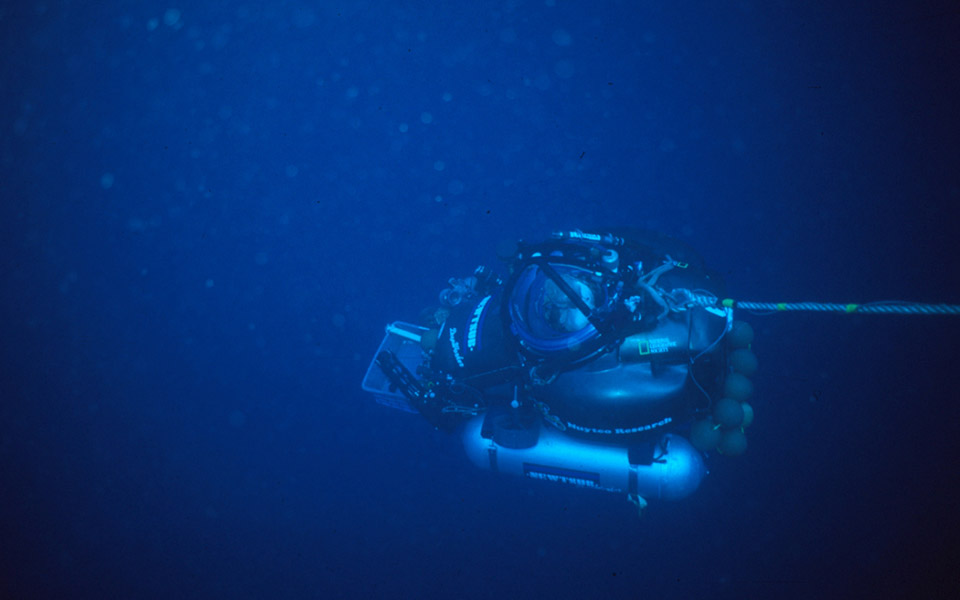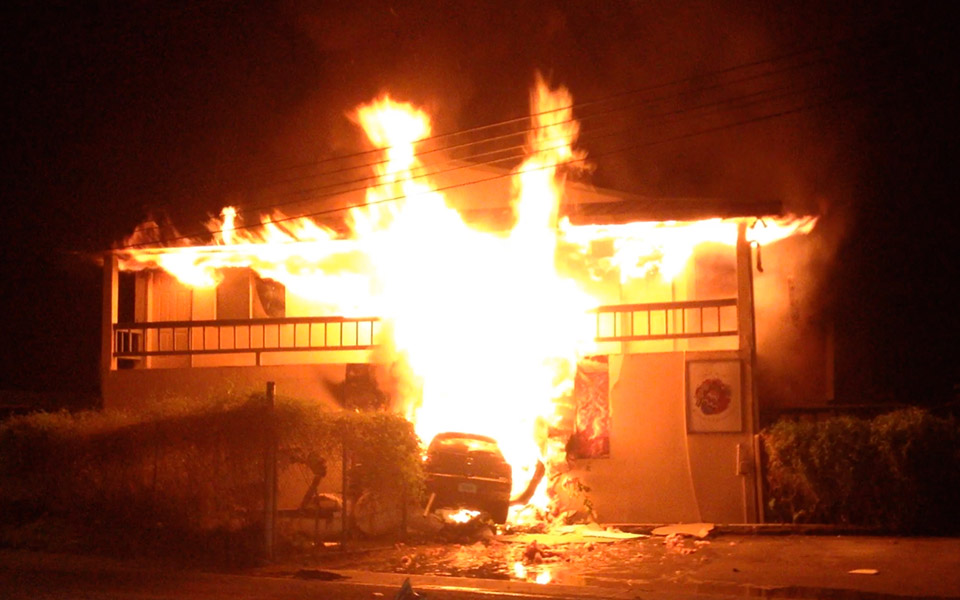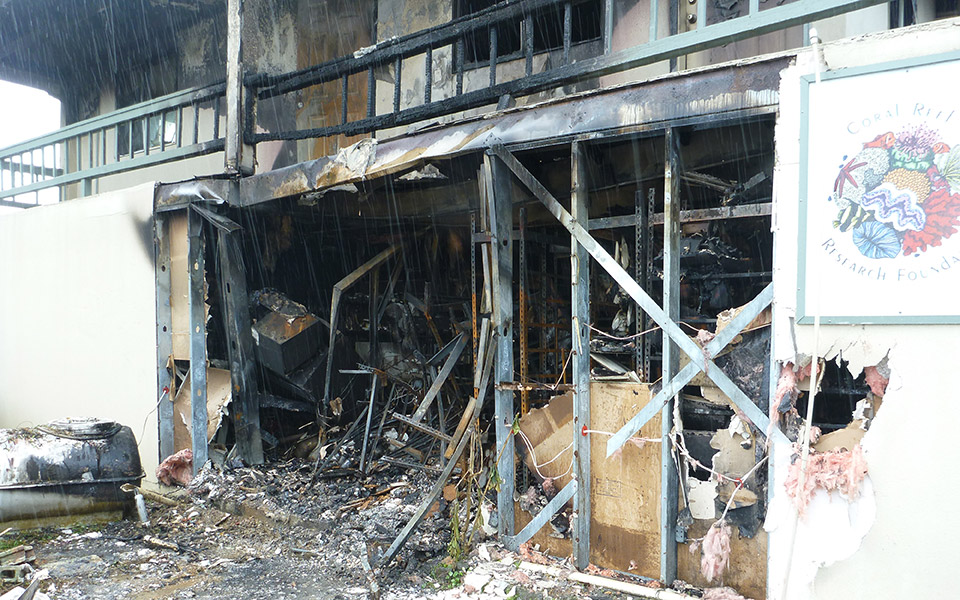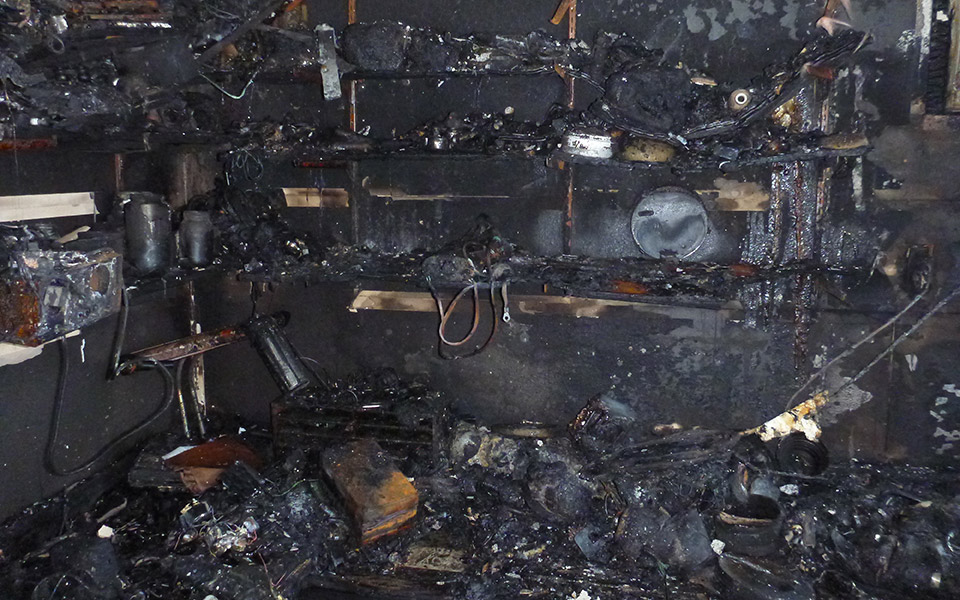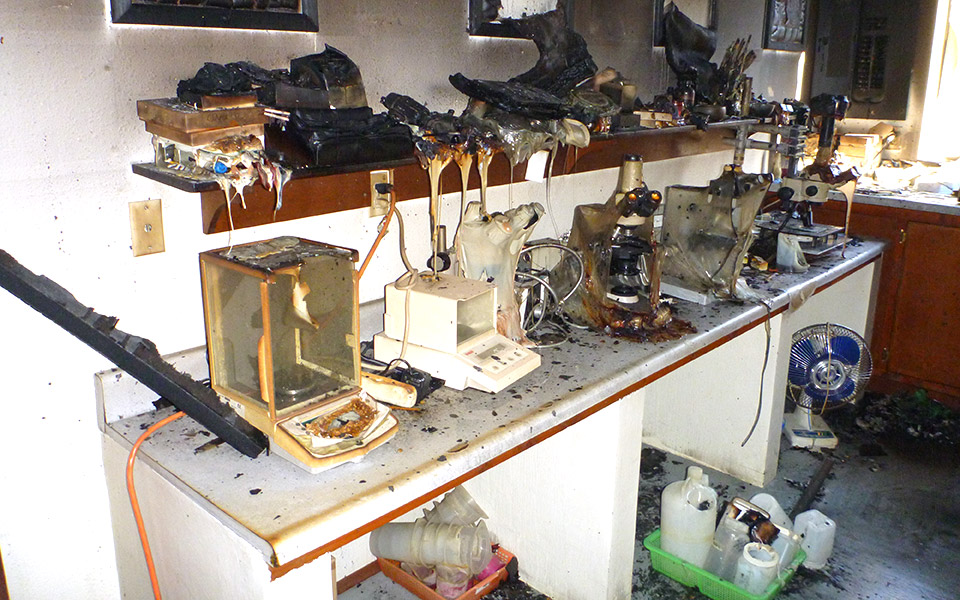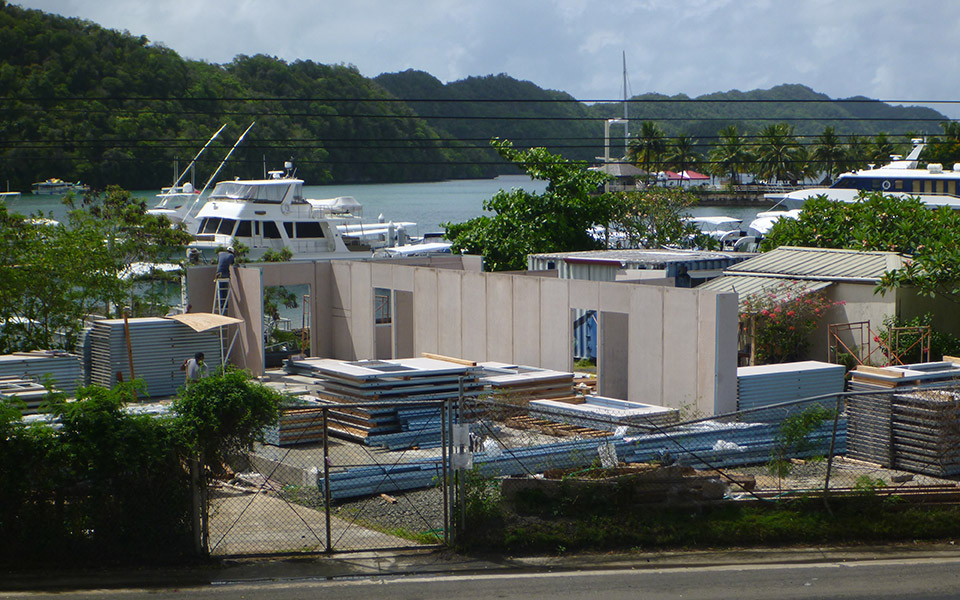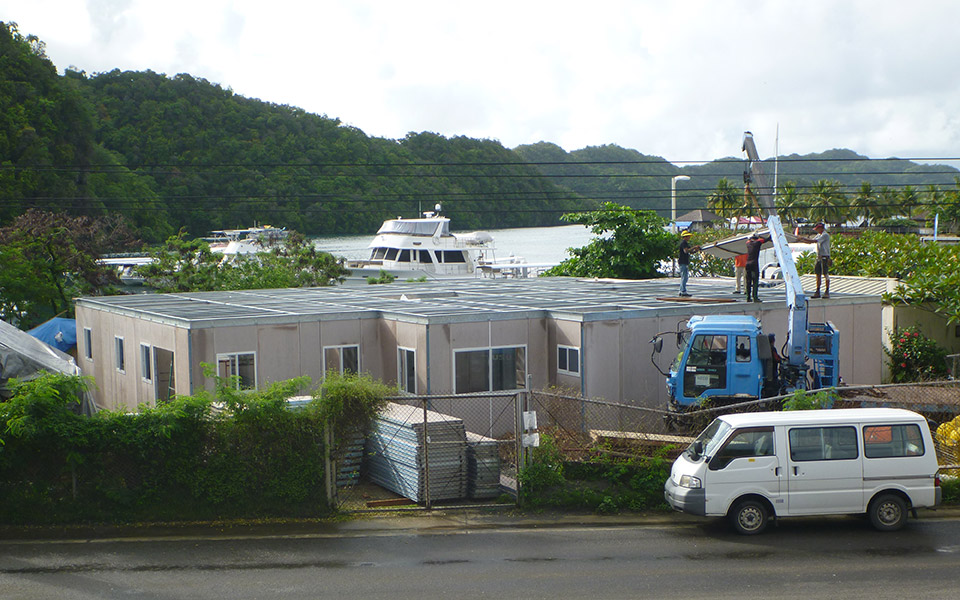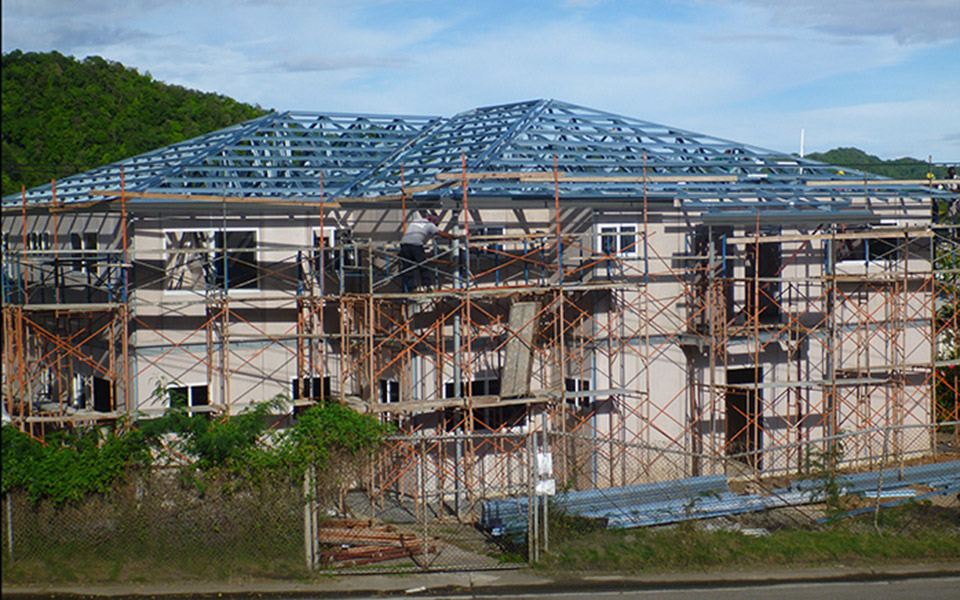CHUUK
CRRF’s initial field station, called the “Chuuk Atoll Research Laboratory” was located in the southeastern corner of Weno Island in Chuuk (Truk), Federated States of Micronesia, next door to the Truk Continental Hotel. Starting in June 1992 two ocean shipping containers were transformed into a temporary facility to start our work for the NCI. Later a small, unfinished concrete building was renovated and a modest program of additional marine research started. Three years later CRRF decided to move our operations to Palau in the western Caroline Islands, after conducting preliminary work there since 1993 in a temporary facility.





